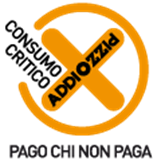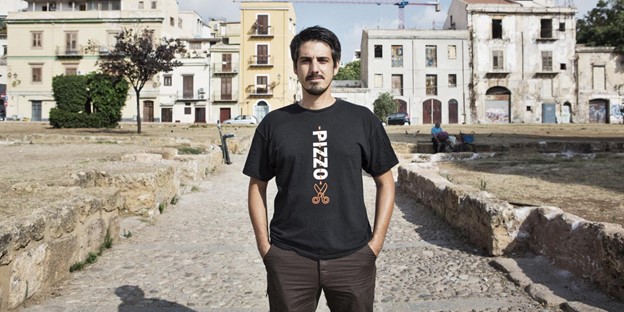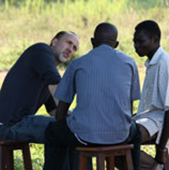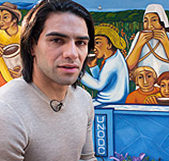The exercises and case studies in this section focus on organized crime approaches. To access exercises and case studies on crime prevention typologies, please visit the relevant sections (case studies; exercises) of Module 2 on Crime Prevention of the Teaching Module Series on Crime Prevention and Criminal Justice.
| Community approaches | |
| Regulatory, disruption and non-justice system approaches | |
| Private sector involvement |
Answers can be taken from the definitions provided in the relevant section of this Module.
Possible discussion points:
Ask students to work in small groups to consider and discuss the following:
In plenary, the lecturer can facilitate a feedback and discussion session that may include the following points:
As part of its efforts to support the implementation of the Doha Declaration, UNODC has launched a global youth crime prevention initiative that builds on the power of sports as a tool for peace. The initiative aims to promote sports and related activities to prevent crime and to effectively build resilience of at-risk youth. Strengthening the life skills of youth is a key objective to minimize risk factors and maximize protective factors related to crime, violence and drug use. By enhancing knowledge of the consequences of crime and substance abuse and developing life skills, the initiative seeks to positively influence behaviour and attitudes of at-risk youth and prevent anti-social and risky behaviour.
The 2030 Agenda for Sustainable Development underlines the growing contribution of sports as a tool for peace in its promotion of tolerance and respect. It also highlights the contributions that sport can make to the empowerment of communities as a whole, to individuals (particularly women and young people) as well as to health, education and social inclusion.
More specifically, sports offer an important opportunity for building life skills of at-risk youth that allow them to better cope with daily life challenges and move away from involvement in violence, crime or drug use.
Case-related files
Significant feature
Discussion questions
 |
Addiopizzo is a grassroots movement established in Sicily in 2004 to build a network of businesses and consumers who refuse to pay extortion payments (known as “pizzo”). This anti-mafia organization aims to bring about a cultural revolution against the mafia. Members of the organization aim to promote a mafia-free economy, discouraging shop owners from giving in to extortion and creating a network of conscious consumers who commit to buying from these shops. In addition, Addiopizzo runs anti-mafia tours for schools, universities, and other interested parties. They invented a label that certifies businesses that are pizzo-free (i.e. do not pay extortion money to organized criminal groups). Using the resources offered by businesses, conscious consumers, and the police, Addiopizzo was able to start a new trend of pizzo-free consumption in Southern Italy. |

Photo Credit: Newsweek
Case-related files
Significant features
Discussion questions

Nadia Murad (Activist) - Goodwill Ambassador for the Dignity of Survivors of Human Trafficking
Ms. Murad, who survived trafficking at the hands of ISIL (Da'esh), was awarded the Nobel Peace Prize jointly with Denis Mukwege in 2018 for their efforts to end the use of sexual violence as a weapon of war and armed conflict. In 2016, she was named the first UNODC Goodwill Ambassador for the Dignity of Survivors of Human Trafficking. She was subject to grave abuses at the hands of ISIL fighters and was bought and sold various times. As UNODC Goodwill Ambassador, Nadia's main goal is to focus on advocacy initiatives and to raise awareness of the plight of millions of victims of trafficking, especially refugees, women, and girls.

Mira Sorvino (Actress) - Goodwill Ambassador for the Global Fight against Human Trafficking (2009-2017)
Ms. Sorvino supported UNODC in encouraging the ratification of the Protocol to Prevent, Suppress and Punish Trafficking in Persons, Especially Women and Children, through advocacy work and participation in global/regional events. She promoted and participated in information and prevention campaigns to educate the general public and/or target audiences on human trafficking and helped disseminate information to the public about UNODC's work. Ms. Sorvino also carried out field visits and participated in national campaigns on anti-human trafficking related issues, including meetings with trafficking victims to help share and disseminate their stories and needs.

Nicolas Cage (Actor) - Goodwill Ambassador for Global Justice (2010-2013)
Mr. Cage contributed to raising awareness, galvanizing and promoting global justice endeavours and combating organized crime, terrorism, and drug trafficking and addiction. He promoted initiatives that contribute towards building a solid foundation for sustainable policy and action in fighting crime, drugs and terrorism. His work involved using art to help combat various forms of crime, by raising awareness of these problems and raising support for victim assistance programmes.

Radamel Falcao (Football Player) - Goodwill Ambassador for the fight against drugs (2013-2014)
Mr. Falcao is a role model of fair play, dedication, and humility not just in his native Colombia, but worldwide. Football is the most popular sport in the world, with billions of fans around the globe. As UNODC Goodwill Ambassador, Falcao helped in reaching the young and marginalized, speaking out on drug prevention, visiting UNODC projects, and witnessing first-hand both the challenges and achievements in the fight against drugs and crime.
Case-related files
UNODC Goodwill Ambassadors https://www.unodc.org/unodc/en/about-unodc/unodc-goodwil-ambassadors.html
Significant features
Discussion questions
These extraordinary people devoted their lives to improve those of others. Reflect on the importance of their work as well as their personal sacrifice. Their inner strength is surely exceptional, yet so many of us have the chance to stand up for what is right and foster a culture of lawfulness in our communities. What ways can you think of (e.g. volunteering opportunities, involvement with local non-profit organizations, community engagement, using art as a tool for peace and justice, etc.) to join this endeavour?
In 2019, the Global Initiative Against Transnational Organized Crime and the Norwegian Ministry of Foreign Affairs launched a Civil Society Resilience Fund Against Organized Crime. The Global Initiative Against Transnational Organized Crime (GI-TOC) is an independent civil society organization. It comprises a network of over 500 experts including prominent law enforcement, governance and development practitioners dedicated to seeking new and innovative strategies and responses to organized crime.
The Resilience Fund, managed by the GI-TOC, builds on the organization’s ongoing work of incubating resilience in communities harmed or threatened by criminal governance. The GI-TOC describes criminal governance as “the control by a criminal group over a territory or community, where it exercises a quasi-governmental role, assuming power where the state cannot or will not assume the monopoly of the use of force”.
In this context, the Fund aims at supporting the efforts of civil society and other non-state actors by building their operational capacity with the aim of creating resilience. The Fund is a grant-making mechanism that finances, nurtures and assists local initiatives in their responses to organized crime. Thus far, the Fund has supported community resilience groups, counter-crime advocates and journalism initiatives. To know more about the Fund and the activities supported, please visit the Resilience Fund webpage.
Case-related files
The Global Initiative against Transnational Organized Crime’s Resilience Fund https://resiliencefund.globalinitiative.net/
Significant features
Discussion questions
On 19 December 2002, in the United States District Court for the Eastern District of Virginia, David Rocci pleaded guilty to import, market and sell circumvention devices known as modification (or "mod") chips in violation of the Digital Millennium Copyright Act. He was the owner and operator of an Internet site dedicated to providing information about copyright infringement (www.iSONEWS.com). Rocci used this website to sell mod chips, designed to circumvent copyright protections built into game consoles such as the Microsoft Xbox and Sony Playstation 2—allowing unlimited play of pirated games on these gaming consoles.
As a condition of his guilty plea, Rocci transferred his domain name and website to the United States Government. In a creative move, the Government replaced iSONEWS.com with a new webpage providing information about the case United States v. Rocci, as well as a general anti-piracy message outlining potential criminal consequences for engaging in online piracy. The case was the first time the United States assumed control of an active domain name in an intellectual property case.
After two weeks, the site received more than 550,000 hits. The educational and deterrent value of this effort might exceed that of any alternative criminal sentence.
Case-related files
Significant features
Discussion questions
|
Regional perspective: Eastern and Southern Africa Case study 6 (Preventive Measures to Curb Illicit Trade in Kenya)On 20 June 2019, the Kenyan Anti-Counterfeit Authority launched a national strategy to combat illicit trade. The plan, called ‘The National Action Plan and Implementation Framework to Combat Illicit Trade 2019/2020 - 2021/2022’, was developed through public participation involving government agencies and the private sector. It points out: Illicit trade is an underground/shadow economy recognized as a multibillion-dollar industry, and one of the most challenging phenomena of our time. It comprises both trade in illegal goods and services, as well as instances where normally legal goods are traded illegally. (…) Illicit trade takes several forms such as smuggling of excisable goods; intellectual property infringement; trading with illegal weights and measures; human trafficking; environmental crime; illegal trade in natural resources; trade in harmful or substandard goods or substances that may carry serious health and safety risks; trade in illegal drugs; trade in illegal plant parts, seeds and animal material, illegal manufacturing; illicit arms trade; and illicit financial flows, among others. These can be broadly classified into four major and interrelated ways: smuggling; counterfeiting, piracy and substandard goods; transit fraud/dumping; and trade in prohibited goods or products. Review the Kenyan National Action Plan and:
|

